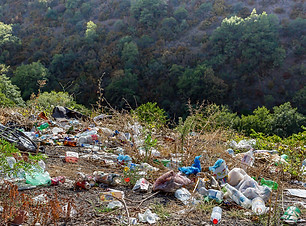Our Research on Plastics

Above is useful information on some plastic types that may be mentioned.

What's the issue with plastic?
Everyone knows plastic waste is a problem. Billions of tons of plastic are piling up in landfills, oceans, and animal habitats. Plastic is also a human health issue. Plastic takes centuries to degrade naturally, and we hope to find a better way to reduce the volume of plastic in the environment and our bodies.

How does plastic break down?
There are many methods by which plastic can degrade. In the environment, plastic is broken down primarily by sunlight and water. Water breaks off microplastics, while UV rays in the sun's light weaken the chemical bonds in plastic polymers. This process is called photodegradation. Our solution utilizes biodegradation, in which enzymes in a living organism completely decompose plastic polymers.

Why is current waste management not working?
The current widely-accepted solution to this issue is recycling. Most plastic sent for recycling gets thrown away due to the high cost of operating recycling plants. It costs more to recycle plastic than it does to just make it new. We hope to make our solution more cost effective by replacing expensive and hard to operate equipment with cheap fungi.

How does plastic break down?
There are many methods by which plastic can degrade. In the environment, plastic is broken down primarily by sunlight and water. Water breaks off microplastics, while UV rays in the sun's light weaken the chemical bonds in plastic polymers. This process is called photodegradation. Our solution utilizes biodegradation, in which enzymes in a living organism completely decompose plastic polymers.

What kinds of plastic are most impactful on the environment?
The most commonly used plastic is PET. Because many PET products are single-use, the environment is full of it. However, all kinds of plastic are found in the environment. Polystyrene for example is particularly dangerous to animals and humans, because it's commonly mistaken for food and eaten by animals that we then consume. PE is the next most commonly found plastic, and many recycling centers won't accept it at all.

How does plastic break down?
There are many methods by which plastic can degrade. In the environment, plastic is broken down primarily by sunlight and water. Water breaks off microplastics, while UV rays in the sun's light weaken the chemical bonds in plastic polymers. This process is called photodegradation. Our solution utilizes biodegradation, in which enzymes in a living organism completely decompose plastic polymers.

